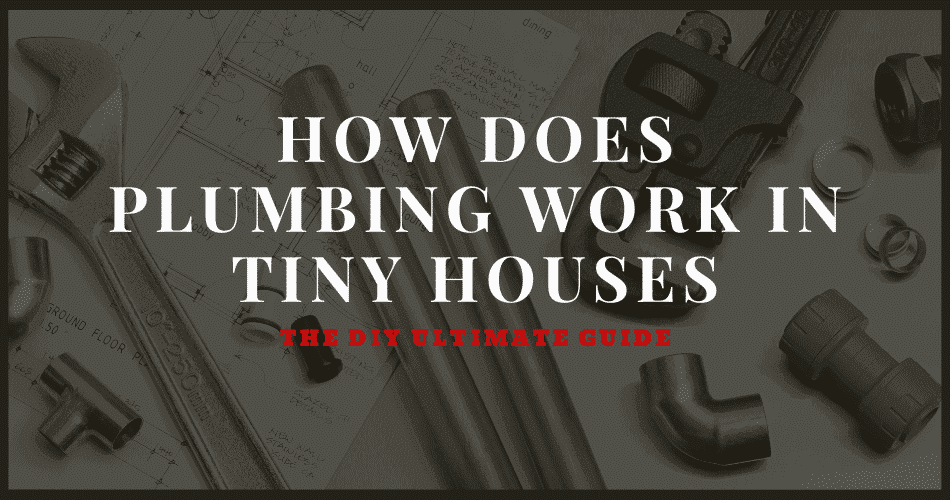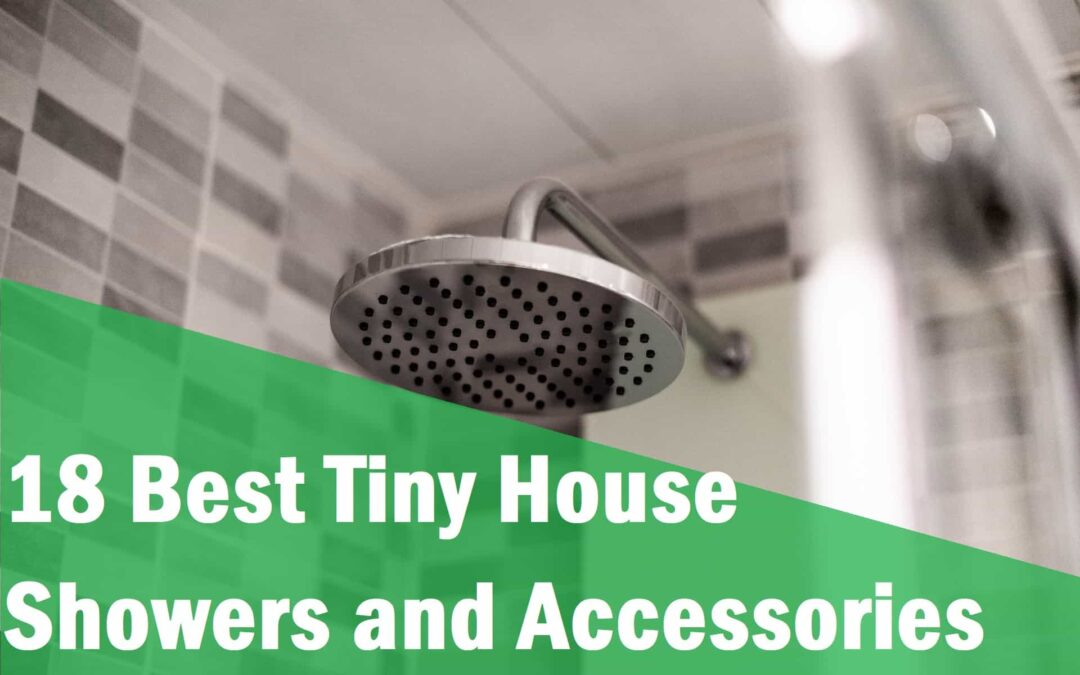Indoor plumbing is one of those inventions that laid the foundations for our modern society.
It’s also one of the things people are most anxious about when considering living in a tiny house.
Thankfully, it’s a whole lot easier than it looks at first glance.
There are lots of great tiny house plumbing options available, with both on and off-grid solutions that are easy to set up and maintain.
Grid-Connected Tiny House Plumbing
If you’re building a tiny house that’s designed to be strictly grid-connected you can use standard plumbing techniques.
This will include full water pressure connections to municipal sources and wastewater disposal via a sewer or septic system.
You can use permanent connections plumbed directly into the system. This only applies to foundation built tiny homes.
If you’re building a tiny house on wheels (THOW), you’ll need to set it up like an RV or a fully alternative and off-grid home, which we go over in detail below.
So keep reading…
Off-Grid Tiny House Plumbing Options
If you’re planning to take your tiny house traveling with you, then you’ll need an off-grid water system.
The vast majority of tiny dwellers rely on systems designed and proven in the RV industry.
These are already optimized for mobile use, are widely available, and are perfect for THOWs.
The basic system you’ll need will include:
- Water Tanks
- Water Pump
- Hot Water Heater
- Toilet
The tiny house plumbing diagram below shows how everything comes together.
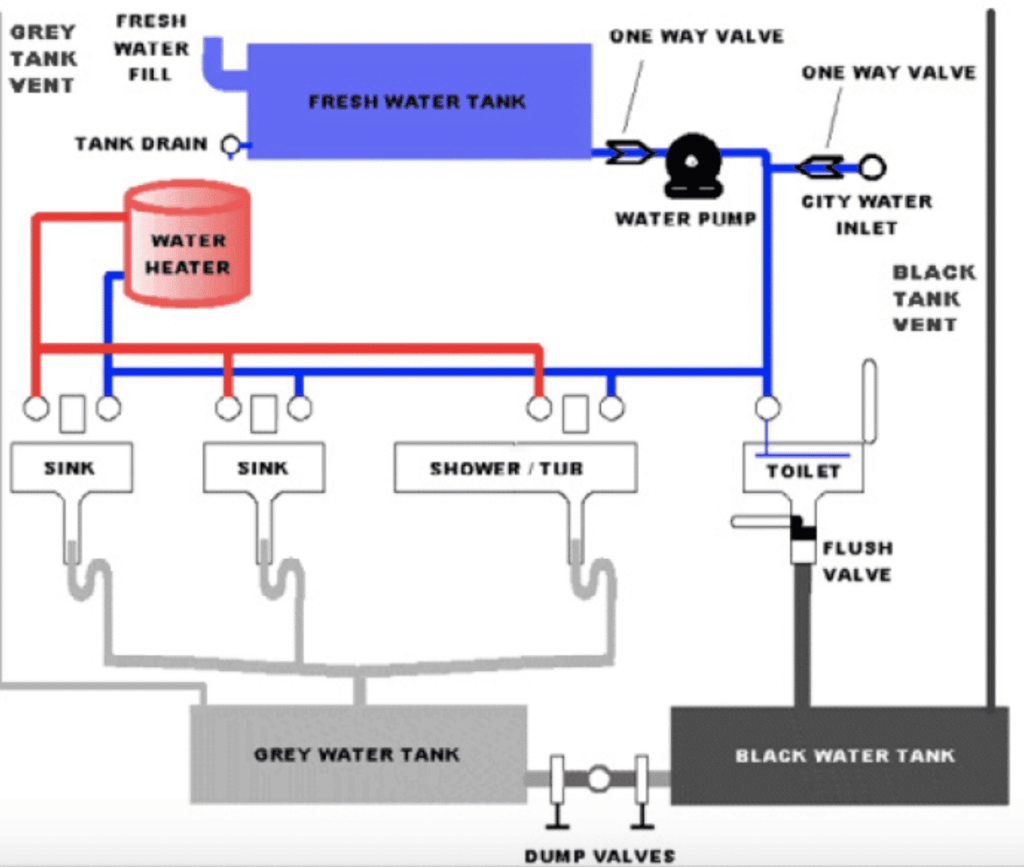
This doesn’t include sinks, showers, bathtubs or any of the other fittings. Those are going to vary wildly depending on the size of the tiny home and your tastes, though I do highly recommend a low flow showerhead.
The system below provides you with the hardware to hook up your chosen fittings.
Tiny House Water Tanks
For any tiny home you intend to move to, water tanks are going to be essential. There are three varieties of water tanks used in RVs and tiny houses:
- Freshwater
- Greywater
- Blackwater
Freshwater Tanks
Freshwater storage tanks hold the water you drink and use for cleaning and bathing. According to the U.S. Geological Survey, the average American uses between 80 and 100 gallons of water per day.
For those living in a tiny house, you need to get that number down closer to the 5 to 10-gallon mark.
A great option is to go with a Large RV water tank, which can hold between 40 and 50 gallons of water.
This gives you close to a week’s worth of water for a single person, or several days for multiple people.
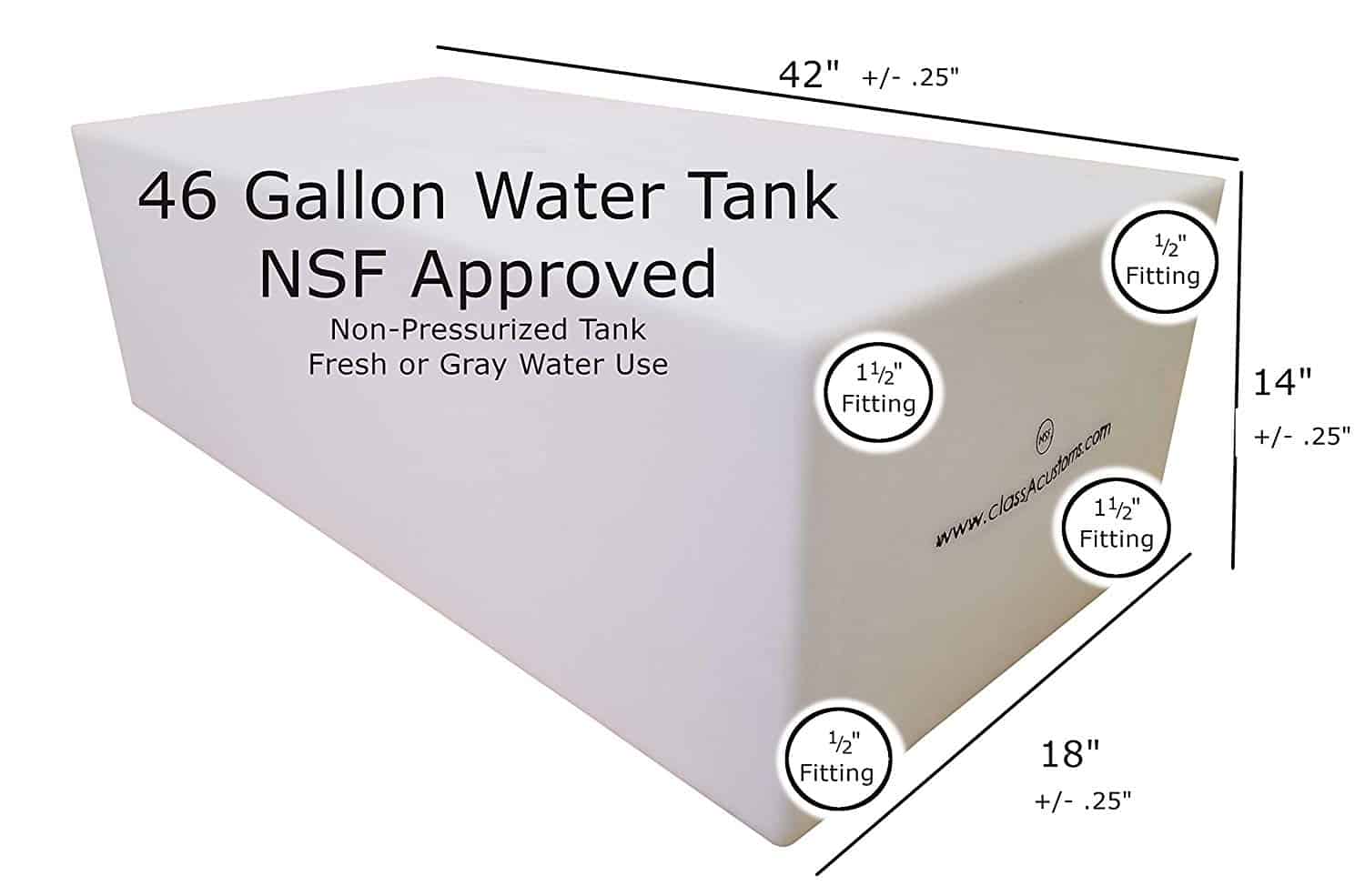
I highly recommend you buy a dedicated freshwater hose to use when filling your tank. The last thing you want is to contaminate your freshwater tank by using the wrong hose.
One I use myself that I highly recommend is from Camco. I’ve used it for years and it’s worked great for me.
Grey Water Tanks
Greywater tanks are one of two tanks that hold wastewater. Greywater is any kind of wastewater that doesn’t contain human waste.
Think dishwater, shower water, and everything that goes down the drain that isn’t a toilet.
Because greywater shouldn’t contain any pathogens, you can use either a black wastewater tank or a standard freshwater tank to hold it.
This gives you more flexibility for where you place your tank and how large it can be. Dumping a greywater tank is kind of a “gray” area, pun intended.
If you’re using biodegradable cleaning and beauty products, it’s perfectly safe to go back into the environment.
Some great biodegradable products I love using and highly recommend, include the following:
- Dr. Bronners Liquid
- Bar Castile Soap
- Seventh Generation Liquid Dish Soap
- CocoBoo Soap Nuts
- Mrs. Meyers Multi-Surface Cleaner
For those living truly off-grid, you could create a greywater recycling system to reuse greywater for your garden or other aquatic features.
Blackwater Tanks
Blackwater tanks hold sewage. They’re always opaque and made from high-density materials to prevent any possible damage or leak.
When sizing a blackwater tank, you don’t need it to be as large as your freshwater tank. Only a small portion of the water you use during the day will go down the toilet.
Emptying the blackwater tank is most RV and tiny home dwellers’ least favorite task.
Filling and Emptying Tiny House Water Tanks
Filling your freshwater tanks is very straightforward.
If your THOWs are parked at an RV park or otherwise connected to city water, all you need to do is hook a hose to a pressurized entry point.
I have found water pressure at RV parks and campgrounds to be unpredictable (actually broke my inlet once) so I make sure to use a pressure regulator now. I love this one from Shurflo. Definitely worth the 10 bucks.
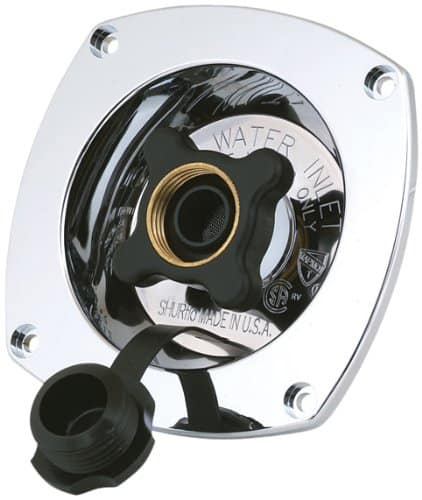
For those times when you’re mobile or living off-grid, you can just pour water into a standard RV gravity fill water inlet
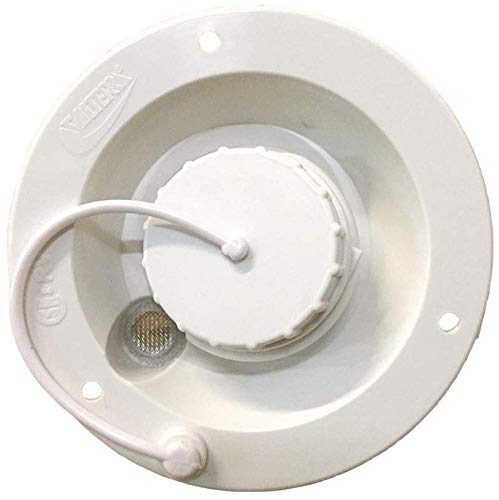
Word to the wise, though, hauling water gets old fast.
A gallon of water weighs 8.34 lbs. If you’re moving 40 gallons you’re looking at over 300 lbs of water.
Emptying your tanks is a lot less fun. If your THOW is in an RV park, you may be lucky enough to have full hookups.
That provides you with power, water, and instant drainage of greywater and blackwater.
If you’re boondocking it, you’ll need to find a dump station. These are located at RV parks, truck stops, and many state and national parks.
For a small fee, you can empty your greywater and blackwater. I’m not going to sugarcoat it, emptying raw sewage from a blackwater tank is gross.
Everyone is going to make a mistake at some point and it’s not pretty when it happens (unfortunately I speak from personal experience here)
So make sure you double- and triple-check all your fittings and seals before and after you empty the tank.
I can’t emphasize this point enough…
Make sure to double- and triple-check all your fittings and seals before and after you empty the tank.
Because greywater shouldn’t contain any harmful pathogens, you can pretty much pour it into any storm sewer, drain or even onto the ground.
To be safe, always check local laws and regulations before you do so though, as many municipalities restrict your ability to do this.
Check out this video to see just how easy hooking up your tiny home’s water and sewer connections can be.
Water Pumps
So you’ve got water storage, now what? If you want your foundation tiny house or THOW to have traditional faucets/showers, you’ll need to invest in a water pump.
It hooks up to your water and power system and moves water throughout your home, works with both tank water and grid connections, and allows you to live a very normal lifestyle.
There are tons of water pump options out there with different features, but I like the one from Shurflo the best.
Designed to provide the quietest possible experience for boats and RVs, it is the perfect choice for tiny homes, too.
A lot of RV pumps can be really noisy, to the point where you won’t want to use your water.
With this one, however, you get a quality water pump and some blissful quiet.
Tiny House Hot Water Heaters
There’s nothing quite like a nice hot shower to relax after a long day. You’ve got two options when it comes to tiny house water heaters: traditional and tankless.
Traditional water heaters heat a tank of water and maintain it at a certain temperature indefinitely.
They’re the most common and least expensive type of water heater for traditional homes, but take up a ton of space in a tiny home.
This combined with the fact that they use energy constantly to keep your water nice and hot doesn’t make it the best choice for tiny homes.
Tankless water heaters, on the other hand, are a newer innovation that instantly heats water on-demand, and is the better option for tiny homes.
They run on either gas or electric power, with different tiny dwellers favoring different power methods.
For a tiny home, a tankless water heater is always going to be better and more effective than a tank water heater.
And choosing between gas and electric just depends on where you’re going to park your THOW.
If you plan to stay off-grid, a tankless gas water heater is the way to go. You can store gas a lot easier than you can electricity, allowing you to enjoy all the hot water you want.
If you plan to live in your THOW mostly in RV parks or other grid-connected locations, a tankless electric water is the best option available since the heater is going to be substantially cheaper to operate.
If you are looking to purchase a tiny house water heater, we recently wrote a comprehensive guide on the best propane tankless water heaters.
Tiny House Toilets
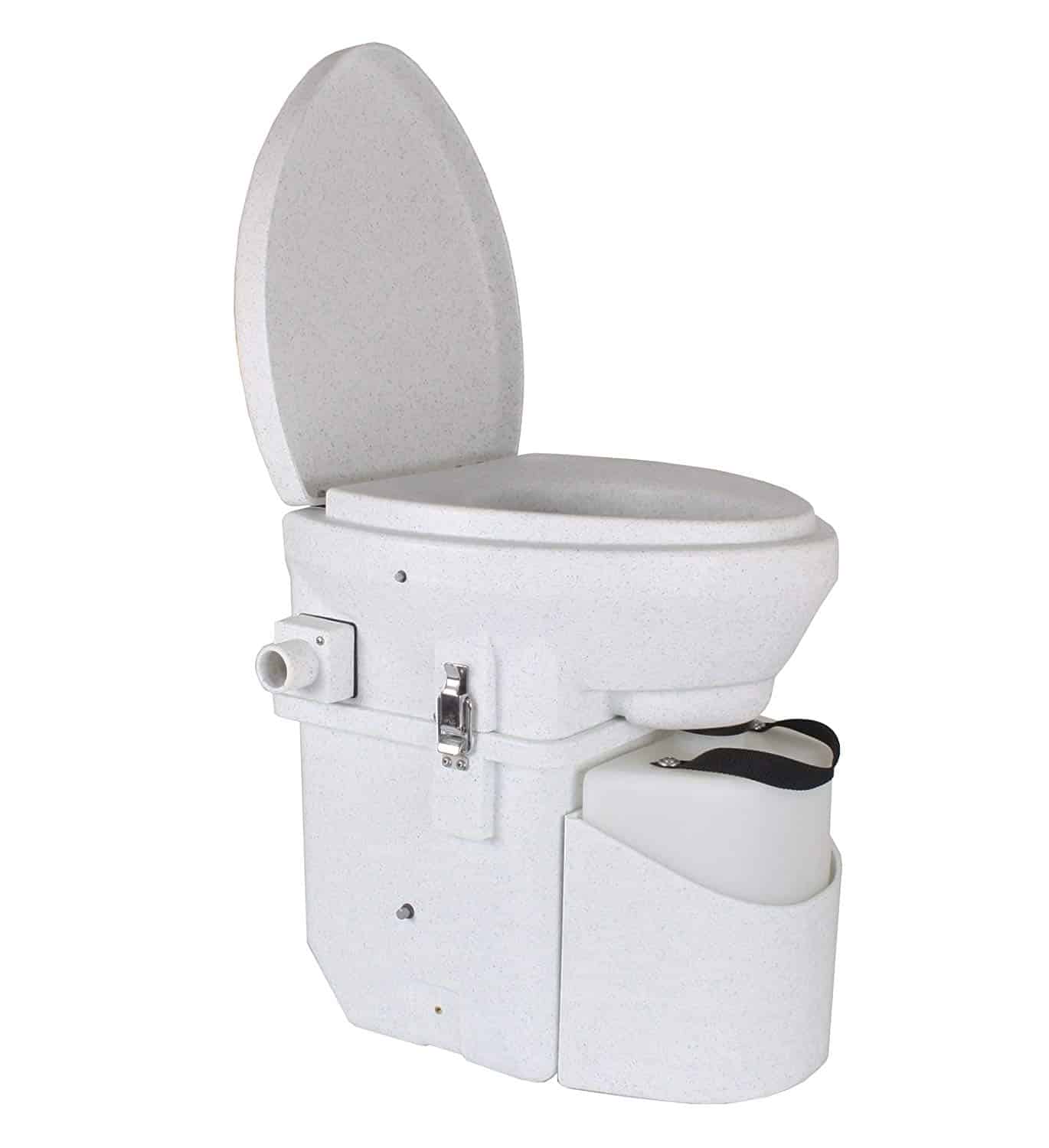
I’ve already extensively covered tiny house toilet options and done an in-depth article on the benefits of composting toilets, so I’ll just give you a brief overview of your options here.
The most common varieties are:
- Composting Toilets
- Macerating Toilets
- Cassette Toilets
- Incinerating Toilets
Composting toilets rely on the natural processes of desiccation and decomposition to break down waste cleanly and easily.
They’re perfect for tiny dwellers because of how easy they are to use and maintain.
One of the best things about composting toilets for tiny homes is how easy it is to dispose of waste.
Bagged human waste can be thrown away in any dumpster the same way diapers can.
If you’re considering a composting toilet for your tiny home, check out this comparison review of some of the best on the market.
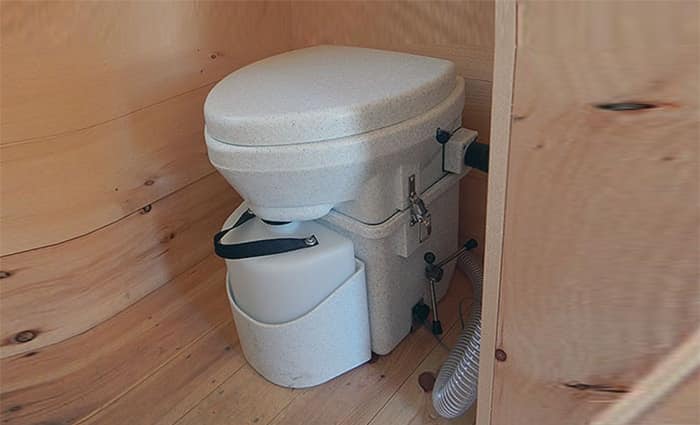
If you want a traditional flush style toilet I highly recommend you consider a macerating toilet.
It’s a flush toilet that first grinds up any waste before sending it to your tank or sewer system.
This makes it much easier to empty your blackwater tank because there are no larger pieces of waste.
Cassette toilets were designed for off-grid cabins, RVs, and boats.
They look almost identical to traditional toilets but use no water whatsoever.
A cartridge contained within the toilet is filled with mylar sleeves that securely wrap any waste and store it for easy disposal in any dumpster.
Incinerating toilets have been used in remote cabins for decades. They rely on gas or electric systems to completely burn any solid waste deposited into them.
They’re a good option if you want to avoid having to deal with waste in any form, but are noticeably more expensive than other options.
Tiny House Pipes
For a tiny home, the best option is PEX tubing. PEX tubing, short for cross-linked polyethylene, is a flexible building material commonly used in plumbing applications.
It weighs less than copper pipes, is easier to work with for a DIY builder, can handle freezing temperatures much more effectively, and can quickly and easily be removed and repaired.
Most importantly of all for tiny dwellers on a budget, PEX tubing costs far less than metal pipes.
Off-Grid Water Treatment
If you want to take your tiny home off-grid and live an alternative lifestyle, you’ll need to figure out a better way to deal with wastewater.
If you want to have a full-fledged use of water, a septic tank is the way to go.
Word to the wise though, septic tanks get expensive fast and require a trained crew to install and hook up. They also aren’t the most sustainable systems over the long run.
I highly recommend you go with a waterless toilet option.
Composting toilets are my personal favorite, but a cassette or incinerating toilet is also fine.
This prevents you from having to deal with any wet sewage.
If you remove blackwater waste from the equation, you make it possible to use your greywater waste in a renewable and sustainable manner.
This does require you to adjust your use of water.
You need to switch to all biodegradable soaps, shampoos, dish soaps, and detergents. Doing so allows you to use your greywater to irrigate your garden and landscaping features. This allows you to use far less water overall.
Tiny House Rainwater Catchment
One of the best ways to improve your tiny home’s off-grid capability is to install a rainwater catchment system.
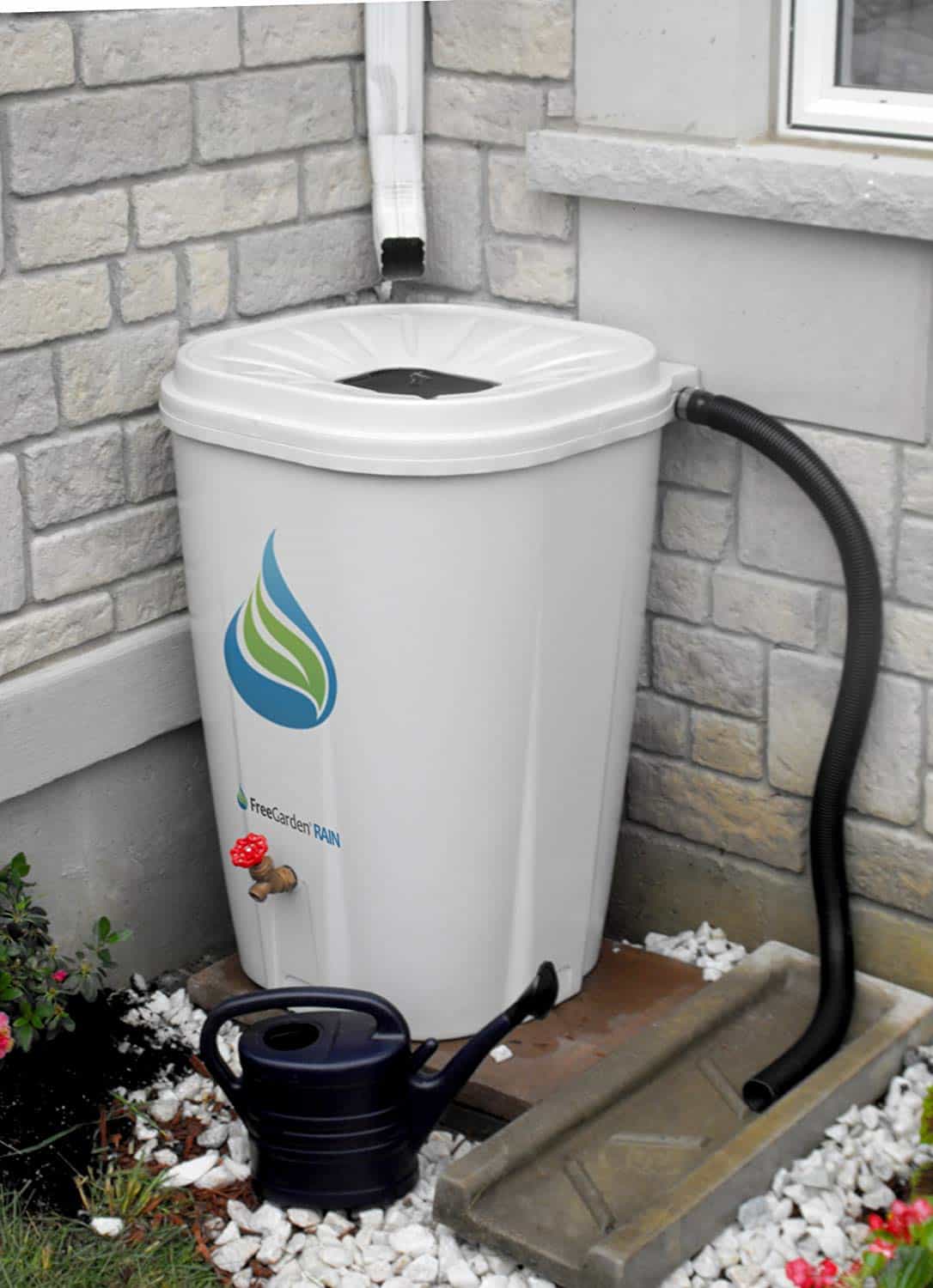
This uses the roof of your home to divert water into a storage tank every time it rains.
You’ll still need to filter this water of course, but it greatly extends the length of time you can stay away from civilization.
If you are looking for a great water filter, I highly recommend a gravity water filter like a Berkey water filter or an Alexapure water filter.
In areas with good rainfall, you can get all the water you need without any problems.
What’s amazing is just how easy a rainwater catch is to set up.
You’ve probably already got drains on your roof. All you need to do is position a rain barrel beneath one to capture the rain.
If you need a rain barrel, this is a good one here.
The video below shows you exactly how it’s done.
Maintaining Your Tiny House’s Plumbing
RV and tiny house plumbing options have come a long way over the past decades, but they still require more upkeep than traditional plumbing.
You need to periodically drain, flush, and sanitize your system, as well as check the physical components for signs of damage.
I recommend you empty all your tanks and run fresh water through them at least once a month.
It doesn’t take long and can be done during your regular dump of the greywater and blackwater tanks.
Every six months, you should sanitize your water system to prevent any algae or other growth. This is as easy as adding a quarter cup of bleach to every 15 gallons of tank capacity and flushing it through all the taps and tanks.
Winterizing Your Tiny House Plumbing
If you live in a cold climate, you must factor this into your initial build. Tanks, PEX tubing, and all other water components need to be insulated. This prevents them from freezing and damaging your water system

